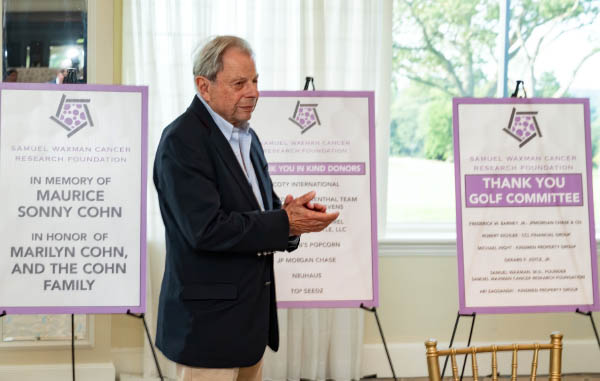A Landmark Union
The Birth of the Samuel Waxman Institute for Aging & Cancer
In New York, we’re used to witnessing big moments—on Broadway stages, inside boardrooms, and across the skyline. But every so often, a story comes along that reminds us that true history-making doesn’t happen in the spotlight—it happens in labs, in foundations, and in the vision of people determined to change lives. That’s exactly what we saw when The Mark Foundation for Cancer Research (MFCR) and the Samuel Waxman Cancer Research Foundation (SWCRF) announced their groundbreaking merger to create the Samuel Waxman Institute for Aging & Cancer.
This is no ordinary partnership. It’s a first-of-its-kind transaction in cancer philanthropy and the launch of the world’s first center devoted exclusively to understanding how the biology of aging influences cancer risk at every stage of life. As someone who has spent years covering the intersection of science, philanthropy, and culture, I can tell you: this is a game-changer.
THE WHY BEHIND THE INSTITUTE
The truth is sobering. Aging remains the single greatest risk factor for cancer, and with the global population over 50 expected to double by 2050, that risk is only intensifying. At the same time, early-onset cancers are on the rise—a trend that has rattled both the medical and patient communities. By focusing directly on the relationship between aging and cancer, the Waxman Institute aims to fill a critical gap in research that has long been underfunded.
Ryan Schoenfeld, PhD, CEO of MFCR, put it best: “By combining world-class expertise, fresh talent across disciplines, and a shared ambition to drive breakthroughs, we can reshape the future of cancer research in this critical area at a time when funding needs are greater than ever.”
For me, that statement resonated deeply. It’s not just about science—it’s about urgency. It’s about seeing the wave before it crashes and working to protect future generations.
BUILDING ON LEGACIES
This new chapter is rooted in a long-standing partnership. Since 2022, MFCR and SWCRF have worked side by side, co-hosting workshops and co-funding studies. By 2024, the collaboration had already distributed $1.5 million in grants to multi-institution teams studying the biology of aging and cancer. The merger formalizes what was already a productive alliance, blending MFCR’s bold, high-risk, high-reward funding model with SWCRF’s Institute Without Walls™—a decades-long commitment to collaboration and knowledge sharing.
SWCRF, founded in 1976, has supported more than $120 million in global cancer research, while MFCR, since 2017, has awarded more than $275 million to investigators in 18 countries. Combined, their reach is staggering. Together, their new Institute will be powered not just by money but by an ethos: collaboration without borders.

A NEW KIND OF RESEARCH HUB
Under the leadership of Samuel Waxman, MD—SWCRF’s founder and now Director of the Waxman Institute—the mission is clear. “Together, the Waxman Institute and The Mark Foundation will address the urgent funding gap in age-related cancer research, pushing this important area of study forward,” Waxman said.
And they’re backing those words with action. The Institute plans to award $15 million in new grants over the next three years to catalyze discoveries in prevention, detection, and treatment. Importantly, this isn’t just about seniors—it’s about everyone. By addressing why younger people are facing early-onset cancers, the Institute will expand its reach across generations.
WHY THIS MATTERS TO ALL
Cancer is a disease that touches everyone. Whether through family, friends, or personal battles, we all carry its shadow. What makes the Waxman Institute’s creation so powerful is its universality. Aging isn’t something that happens to “other people.” It’s our shared journey. By placing it at the center of cancer research, this Institute speaks directly to every single one of us.
For New Yorkers, there’s also pride in knowing that this global hub will be rooted right here in our city—a place where science, culture, and determination collide every day. It’s fitting that a city known for reinvention is now home to an institute designed to reinvent how we fight cancer.
The transaction is expected to close later this year, subject to approvals. But its impact is already being felt. This is the kind of bold, forward-thinking collaboration that could redefine oncology and save countless lives.





